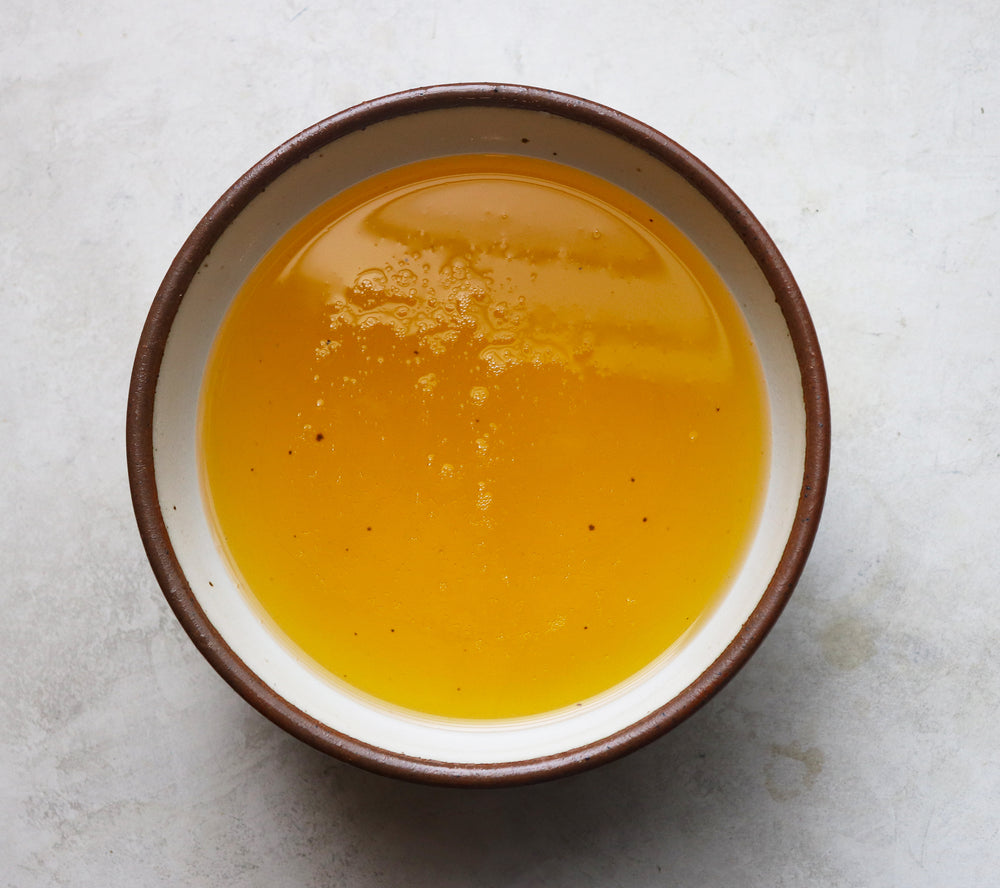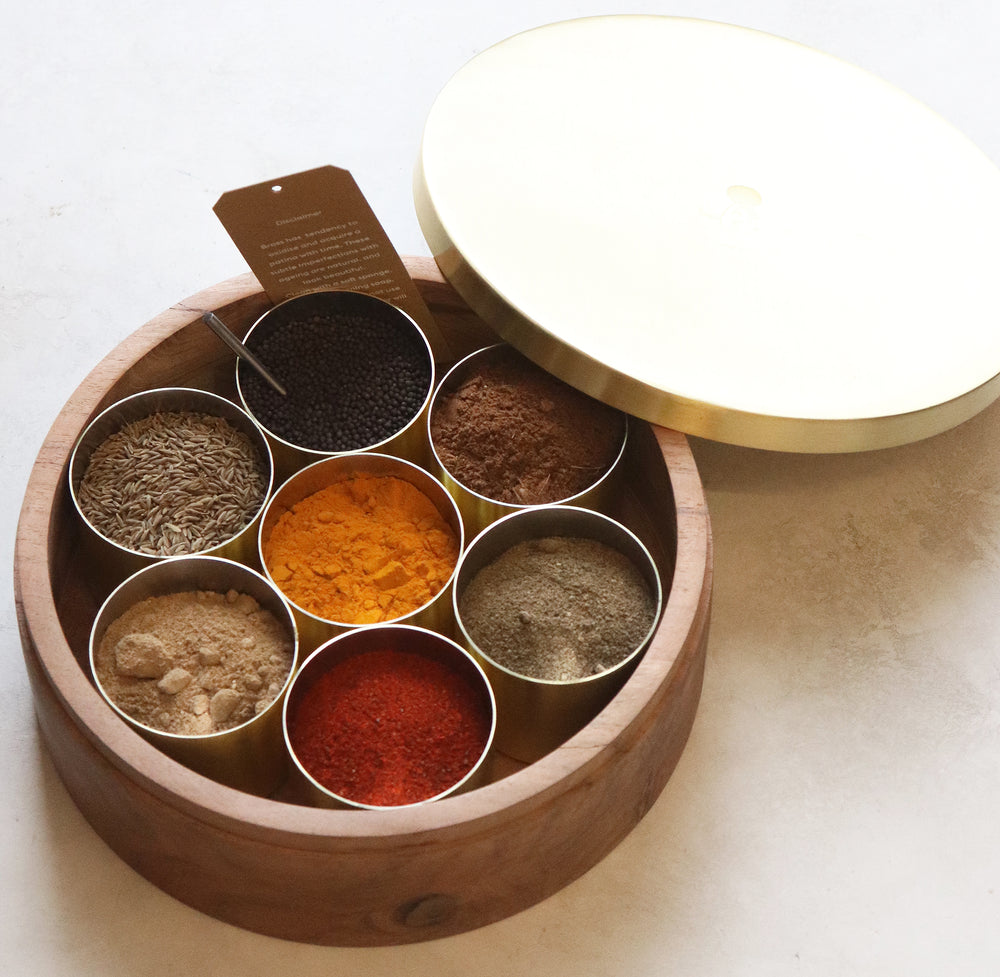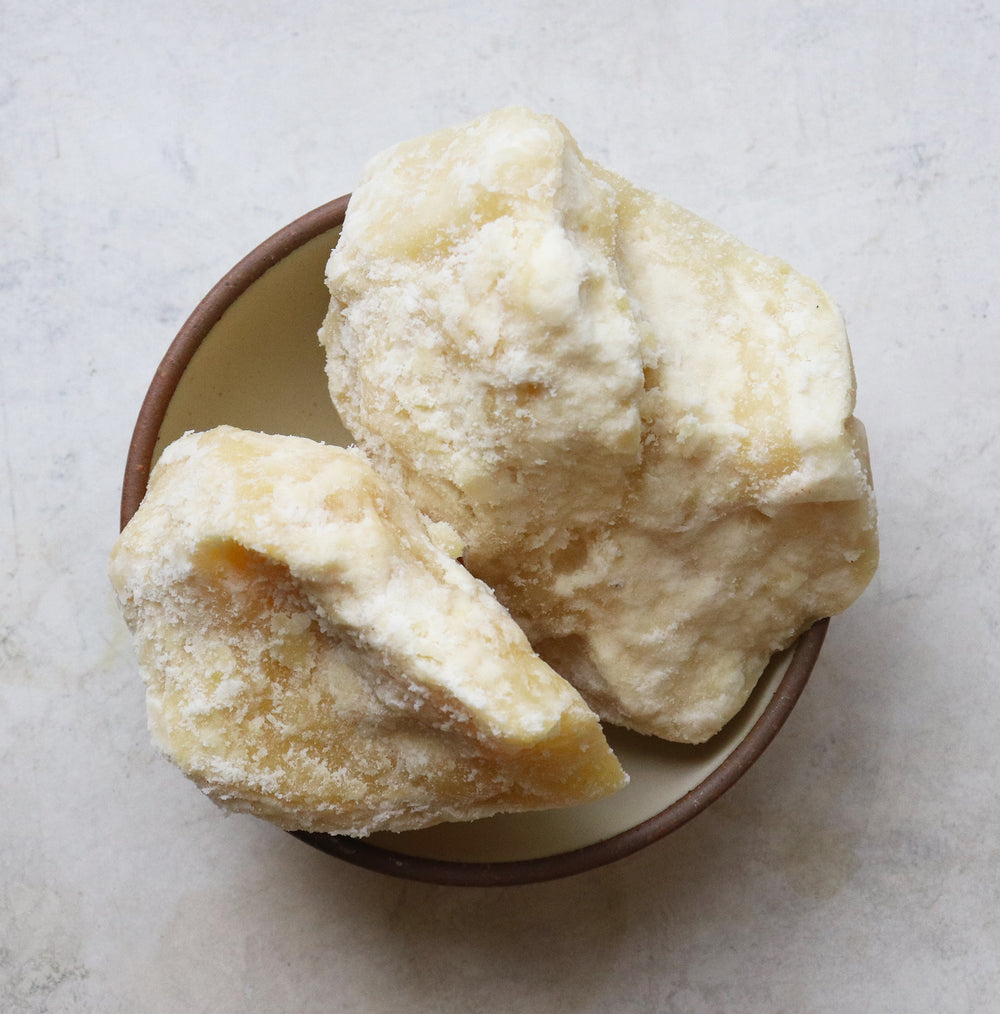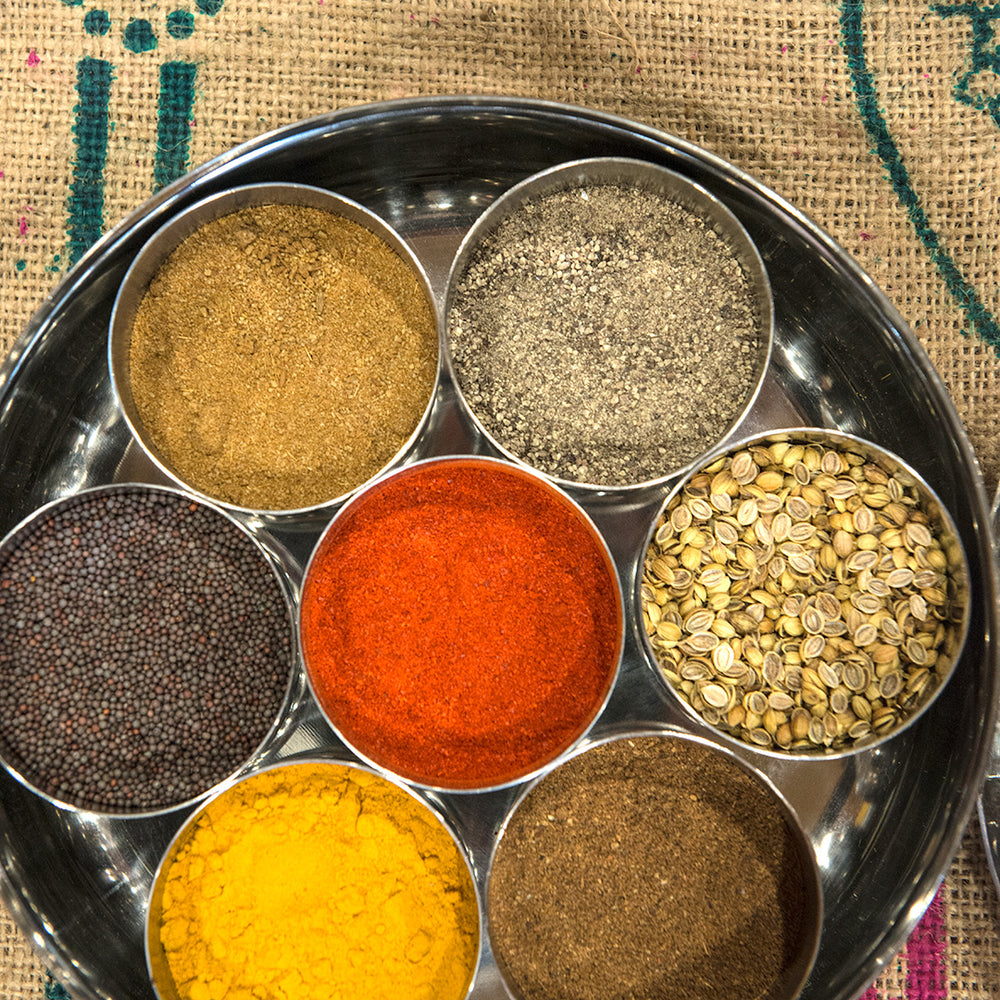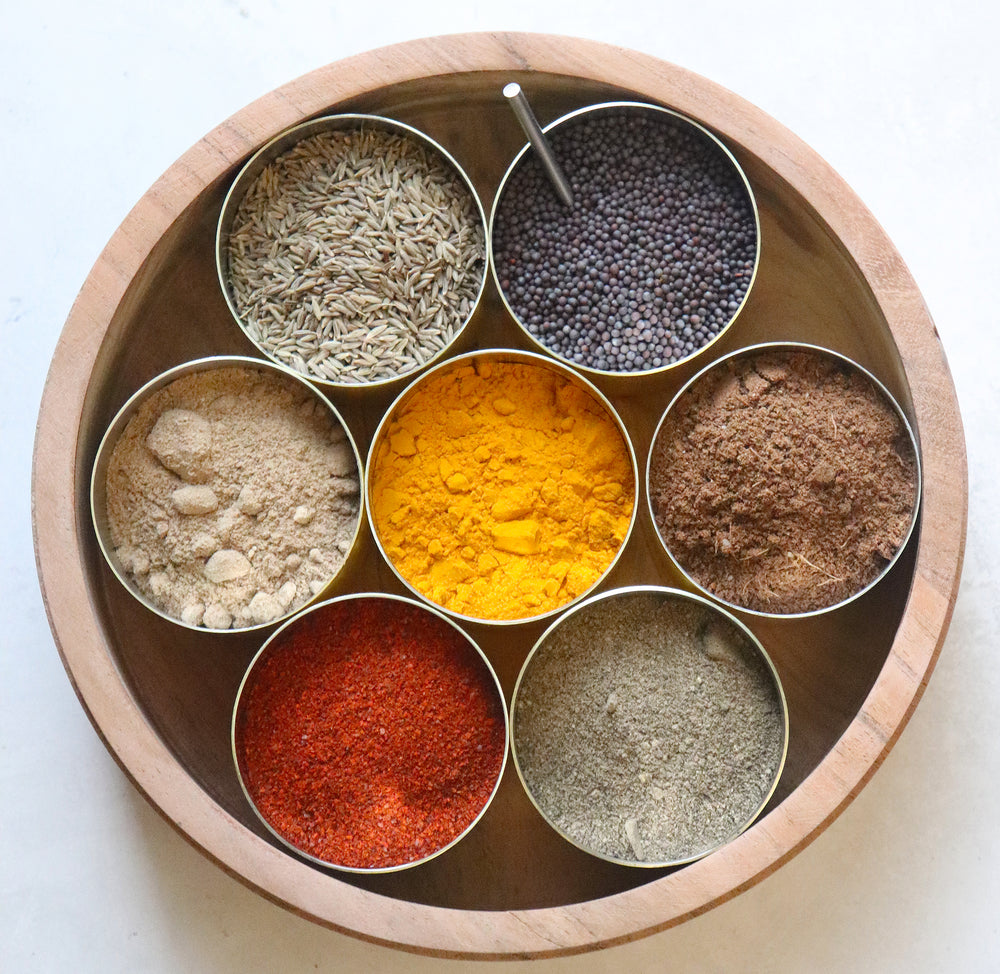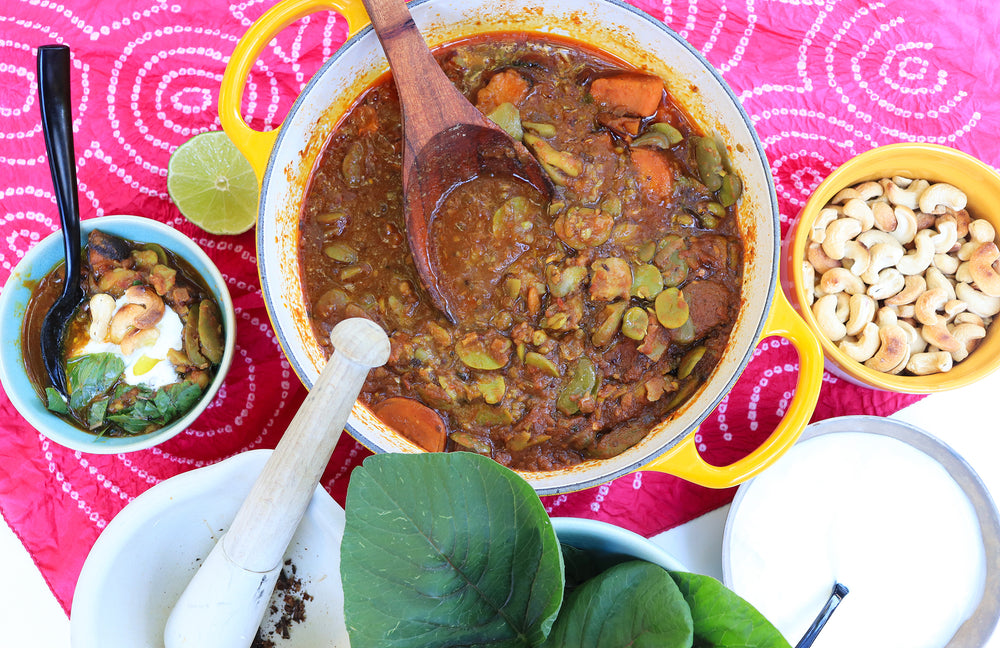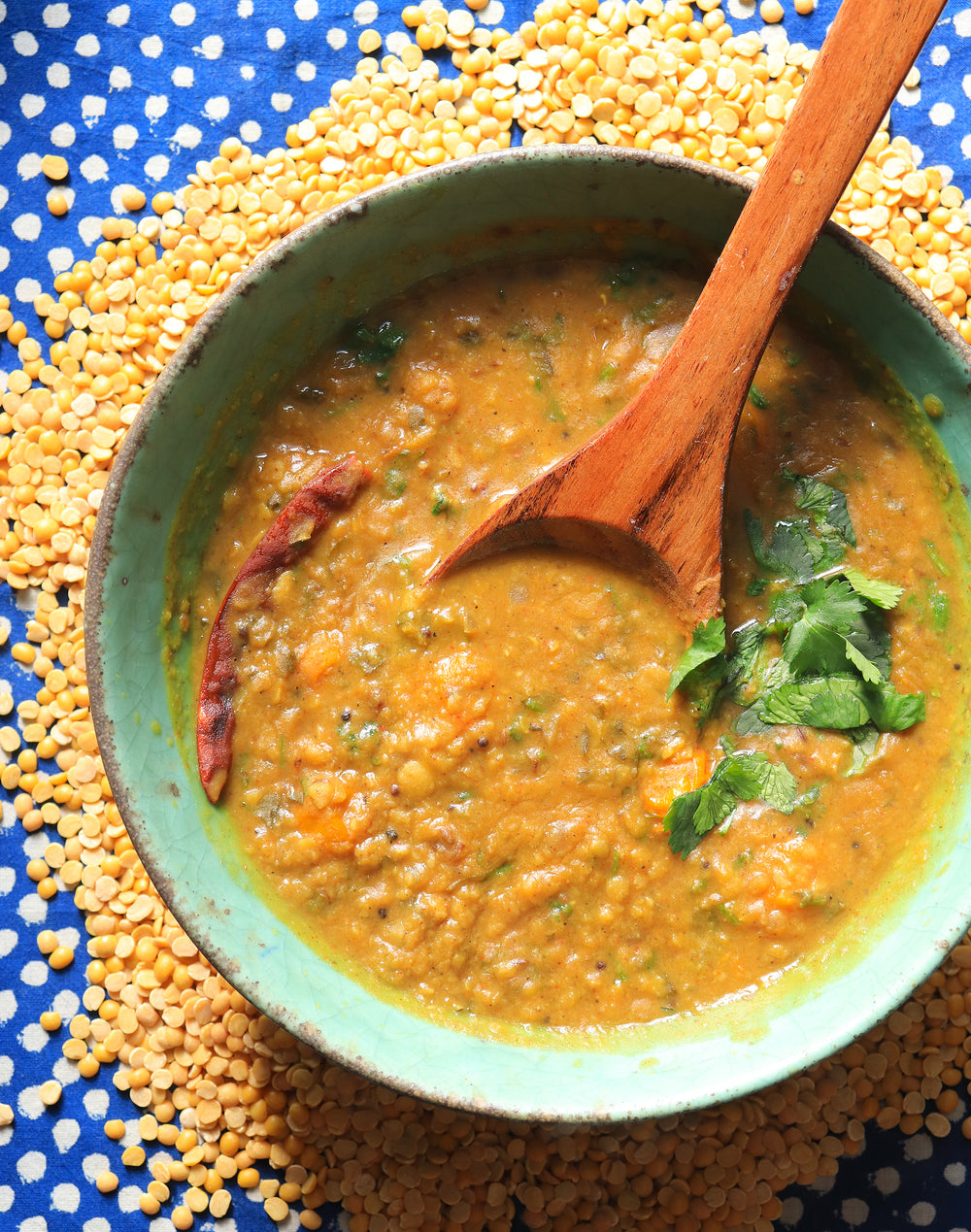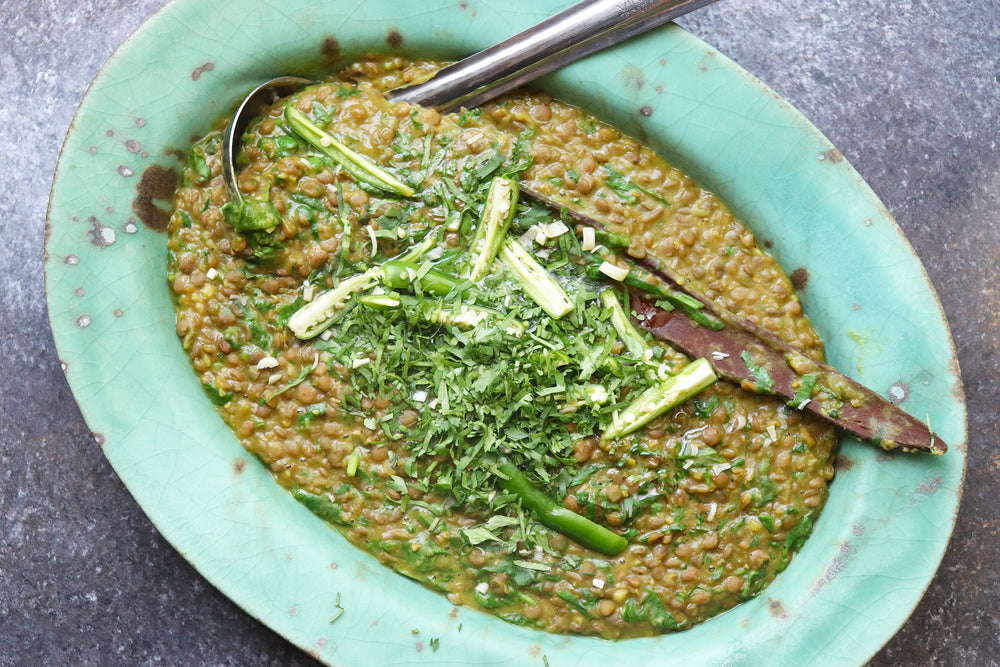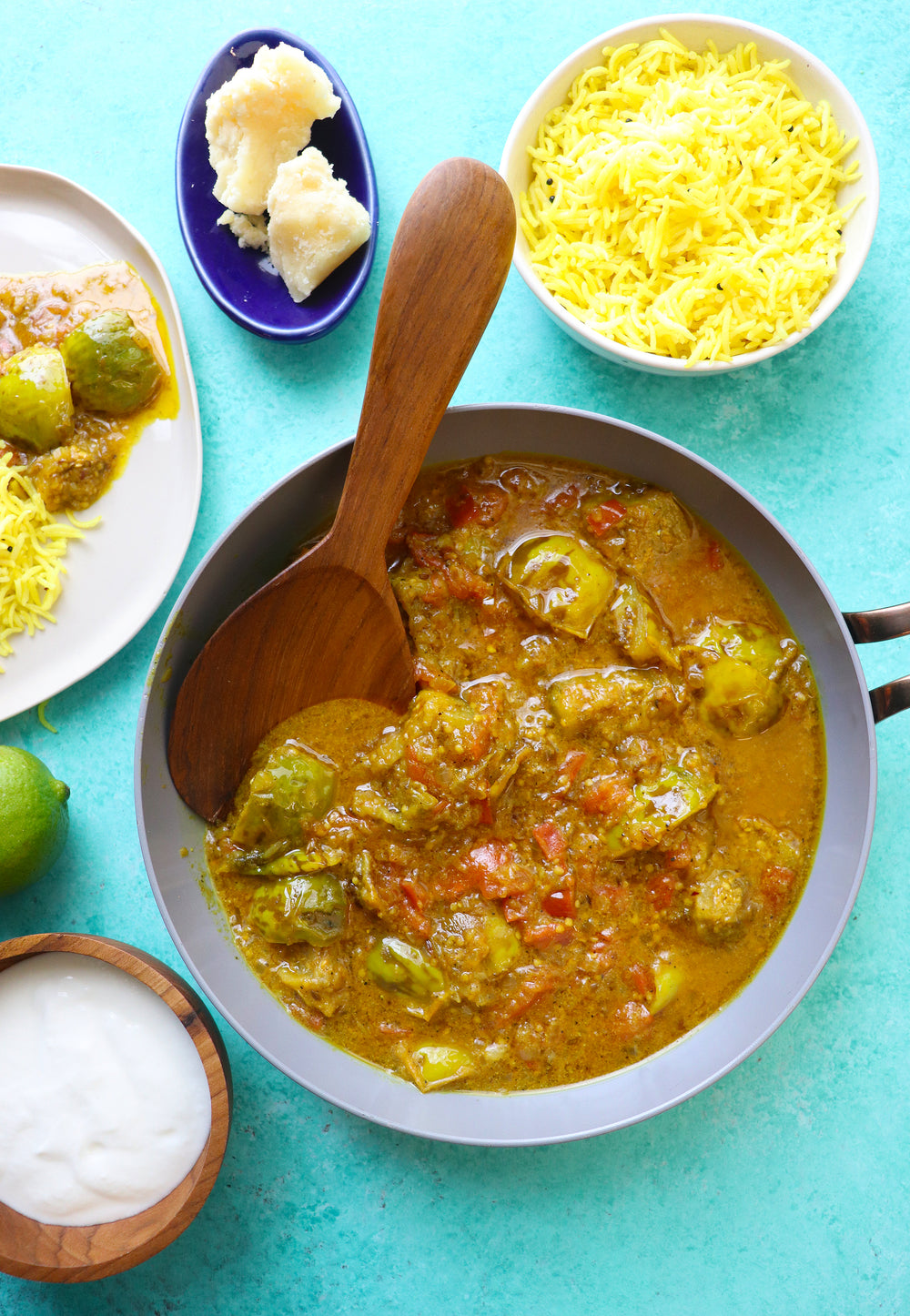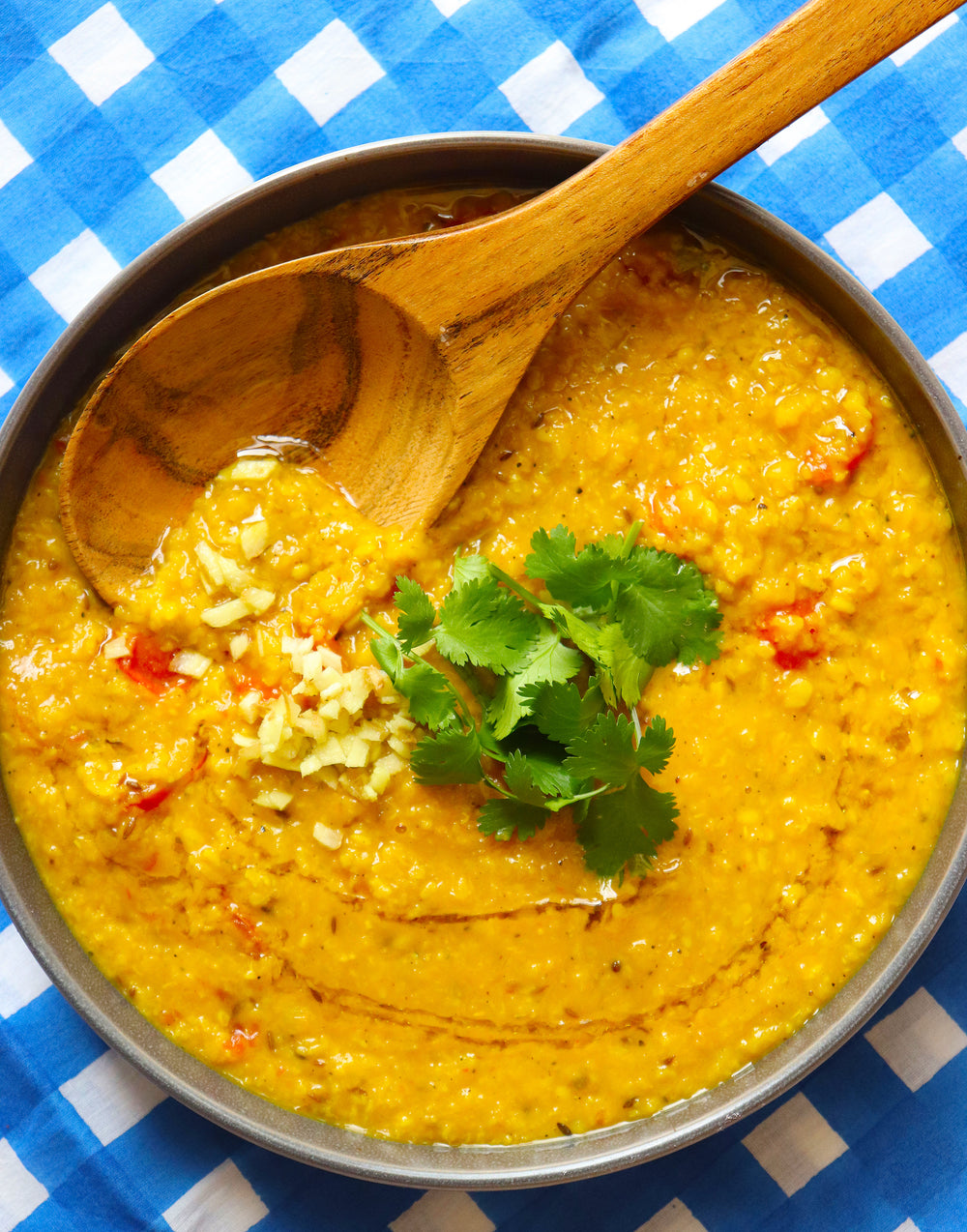
75 Min
DF
GF
V
Sindhi Dal
Be it through taste, aroma or touch, food is one of the most visceral ways our brain stores happy memories. The mere smell of chickpea fritters frying in a big vat of oil reminds me of monsoons in India, when pakoras instantly become snack du jour. And despite not having much of a sweet tooth, chickpea flour roasting with ghee to make mithai, an Indian fudgelike sweet, makes me salivate.
On a recent trip to India with my daughter, Ajna, we had one such experience that I will forever cherish. Late into the night after two long flights, we arrived in our hotel in New Delhi, hungry and tired. The only food available was limited room service. We ordered the staple, dal, and rice.
Dal, being a lentil stew popular in virtually every home and restaurant across India, can be made a thousand different ways. That night, the dal was a simple yellow nourishing moong dal flecked with fresh tomatoes and cumin but with a sharp delicious bite of ginger in every spoonful. It was very similar to a dal my mother would make that is native to the province of Sindh, but the copious amount of ginger changed everything about it. Even for a seasoned cook like me, the dal made me tingle with excitement, and we happily licked every drop knowing that it was going to become a staple in my cooking when I returned to Texas.
This dal is currently on my restaurant’s menu, and here is a recipe for it — I urge you to fearlessly put this much ginger.
Be it through taste, aroma or touch, food is one of the most visceral ways our brain stores happy memories. The mere smell of chickpea fritters frying in a big vat of oil reminds me of monsoons in India, when pakoras instantly become snack du jour. And despite not having much of a sweet tooth, chickpea flour roasting with ghee to make mithai, an Indian fudgelike sweet, makes me salivate.
On a recent trip to India with my daughter, Ajna, we had one such experience that I will forever cherish. Late into the night after two long flights, we arrived in our hotel in New Delhi, hungry and tired. The only food available was limited room service. We ordered the staple, dal, and rice.
Dal, being a lentil stew popular in virtually every home and restaurant across India, can be made a thousand different ways. That night, the dal was a simple yellow nourishing moong dal flecked with fresh tomatoes and cumin but with a sharp delicious bite of ginger in every spoonful. It was very similar to a dal my mother would make that is native to the province of Sindh, but the copious amount of ginger changed everything about it. Even for a seasoned cook like me, the dal made me tingle with excitement, and we happily licked every drop knowing that it was going to become a staple in my cooking when I returned to Texas.
This dal is currently on my restaurant’s menu, and here is a recipe for it — I urge you to fearlessly put this much ginger.

75 Minutes
4

Notes & Variations
- To make ginger purée, combine 2 cups of rough chopped unpeeled ginger with 1/2 to 1 cup of water (just enough to cover the top of the ginger) and purée in a blender until smooth. Use the ginger with the water in the dal.
- In lieu of fresh tomatoes, use 1 cup of canned crushed tomatoes — I prefer the Mutti brand.
- This dal can be made with masoor (orange) lentils or with channa dal; however, the cooking time will increase.

Notes & Variations
- To make ginger purée, combine 2 cups of rough chopped unpeeled ginger with 1/2 to 1 cup of water (just enough to cover the top of the ginger) and purée in a blender until smooth. Use the ginger with the water in the dal.
- In lieu of fresh tomatoes, use 1 cup of canned crushed tomatoes — I prefer the Mutti brand.
- This dal can be made with masoor (orange) lentils or with channa dal; however, the cooking time will increase.
Tags:

Stock Your Pantry
Tags:

Stock Your Pantry
